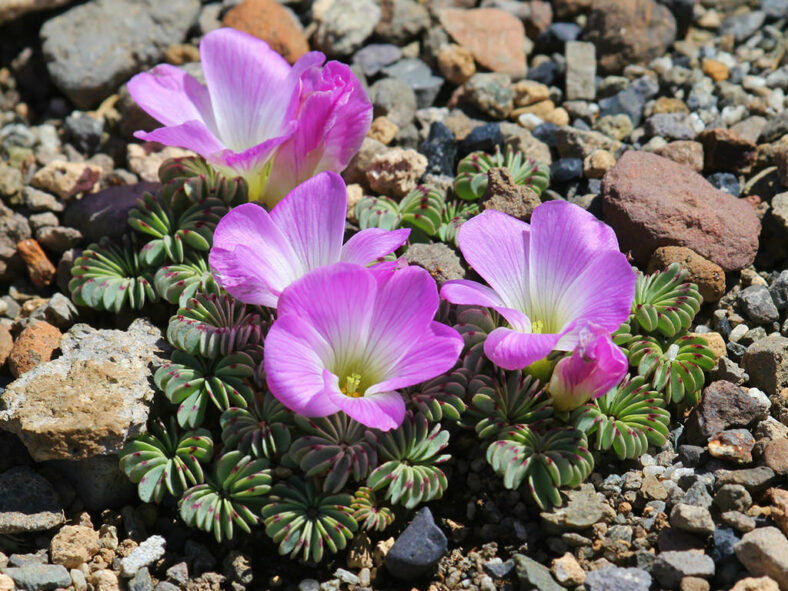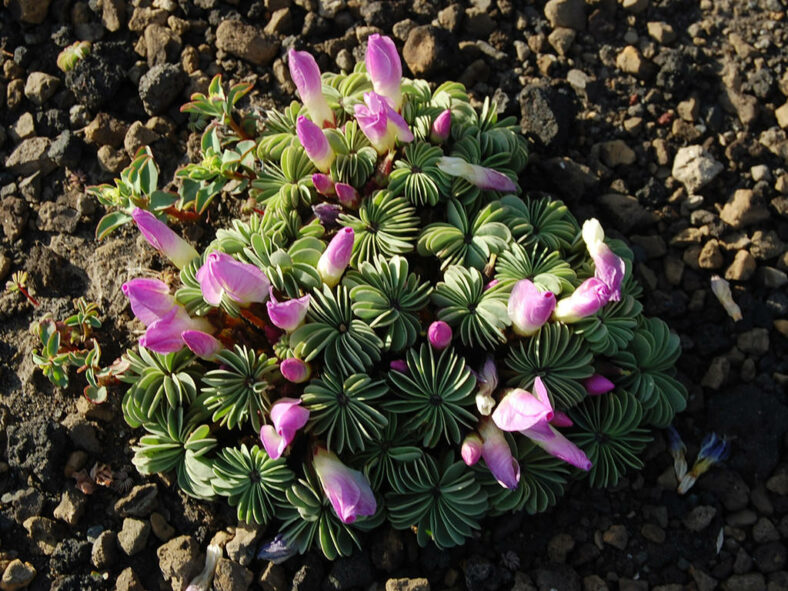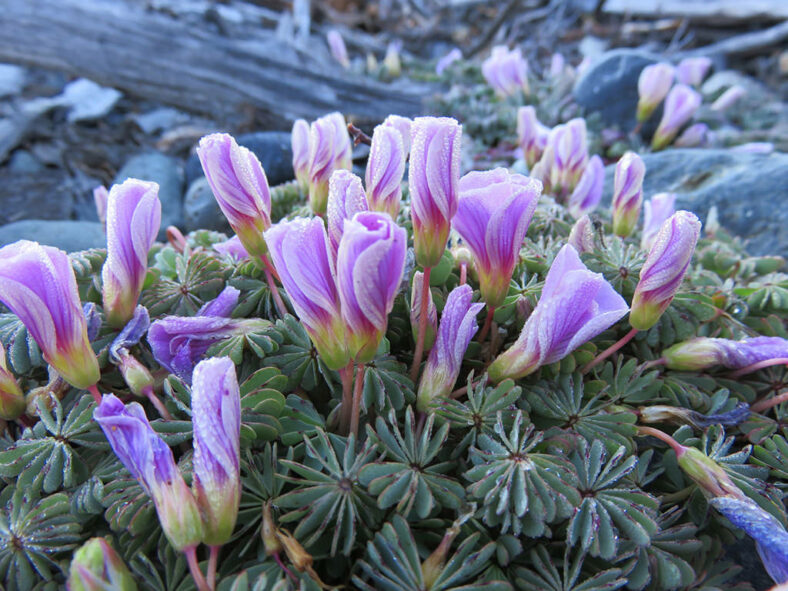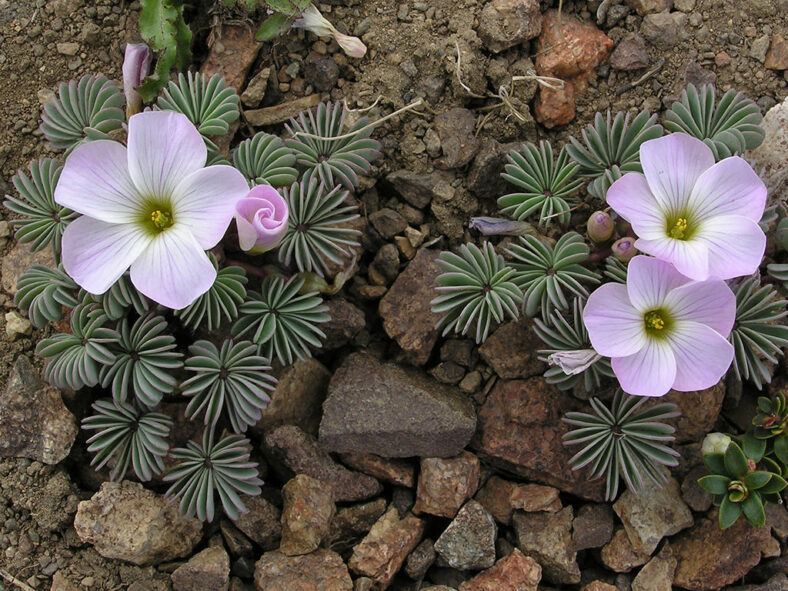Oxalis adenophylla is a cold-hardy, perennial plant that can be grown in beds, borders, rock gardens, or containers. It is a recipient of the prestigious Award of Garden Merit of the UK's Royal Horticultural Society.
Scientific Name
Oxalis adenophylla Gillies ex Hook. & Arn.
Common Name(s)
Chilean Oxalis, Chilean Wood Sorrel, Sauer Klee, Silver Shamrock
Synonym(s)
Acetosella adenophylla, Acetosella bustillosii, Oxalis bustillosii
Scientific Classification
Family: Oxalidaceae
Genus: Oxalis
Etymology
The specific epithet "adenophylla (ad-en-oh-FIL-uh)" means "having glandular leaves" and refers to the leaves that have a few scattered glands on both surfaces.
Origin
Oxalis adenophylla is native to Argentina and Chile. It grows on talus slopes in alpine regions at elevations ranging from 3,280 to 8,530 feet (1,000 to 2,600 m).
Description
Oxalis adenophylla is a bulbous plant that forms a clump of gray-green leaves with 9 to 20 narrow, heart-shaped leaflets folded in half. It can grow up to 4.8 inches (12 cm) tall and spread 6 inches (15 cm) in diameter. When exposed to full sun, the leaves take on a pink or purple hue.
From late spring to early summer, Oxalis adenophylla produces solitary flowers that can reach up to 1.6 inches (4 cm) in diameter. The flowers are white, flushed with purple toward the tips of the petals, and adorned with darker veins.

How to Grow and Care for Oxalis adenophylla
Light: Although it can tolerate some shade, Oxalis adenophylla needs bright, indirect light to grow well and produce flowers.
Soil: Use loose, sandy soil rather than rich, organic soil.
Temperature: Oxalis adenophylla is susceptible to rot in temperate zones during the winter, but this is not a problem in areas where the ground freezes in winter. It grows best in USDA Plant Hardiness Zones 4a to 9b, with average minimum winter temperatures ranging from -30 to 30 °F (-34.4 to -1.1 °C).
Watering: Keep the soil barely moist but never soggy. Water only when the soil's top 2 inches (5 cm) are dry. It is best to water this plant from the bottom to avoid waterlogging its thin, fragile stems and keep the spil the soil loose.
Fertilizing: Feed Oxalis adenophylla monthly with a basic houseplant food at half the recommended strength during the growing season, from spring to fall. Never feed it when it is dormant, and the bulbs are resting.
Repotting: This plant does not require frequent repotting unless you want to change the pot for looks.
Propagation: The easiest way to propagate Oxalis adenophylla is to dig up an established clump, divide it, and replant the bulbs early in the fall. It can also be propagated by seeds sown in late winter or early spring.
See more at How to Grow and Care for Oxalis.
Toxicity of Oxalis adenophylla
Oxalis adenophylla contains oxalic acid and can be toxic to humans and pets if enough is ingested.
Cultivars of Oxalis adenophylla
Links
- Back to genus Oxalis
- Succupedia: Browse succulents by Scientific Name, Common Name, Genus, Family, USDA Hardiness Zone, Origin, or cacti by Genus
Photo Gallery
Click on a photo to see a larger version.


